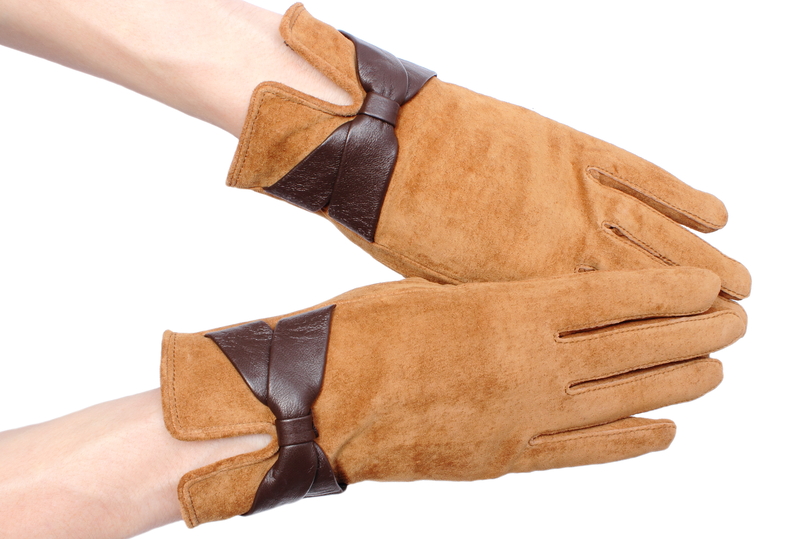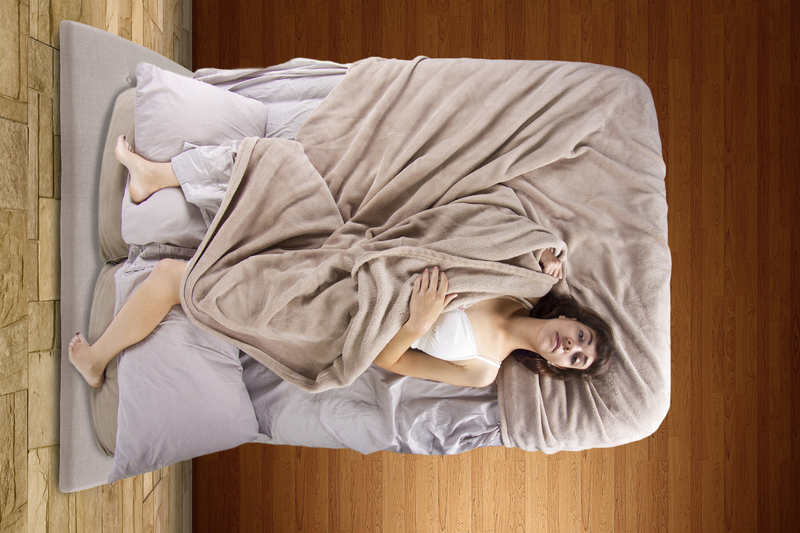Ensure Long-Lasting Beauty for Your Velvet Curtains with These Care Tips
Posted on 02/06/2025
Ensure Long-Lasting Beauty for Your Velvet Curtains with These Care Tips
Velvet curtains are a timeless statement of elegance and luxury for any home. Their lush texture, rich colors, and enchanting light absorption make them a favorite choice among homeowners and interior designers. However, the sophisticated allure of velvet drapes comes with a caveat--they require diligent care and maintenance to preserve their sumptuous beauty and ensure they remain a stunning feature in your living space for years to come. In this comprehensive guide, we'll reveal expert care tips for velvet curtains and proven techniques to keep them looking new, plush, and vibrant.
Why Choose Velvet Curtains?
Before diving into the maintenance tips, it's important to understand what makes velvet curtains such a distinctive choice. Velvet is a woven tufted fabric in which the cut threads are evenly distributed, giving it a unique soft feel. This fabric has been a symbol of opulence for centuries and is renowned for:
- Luxurious appearance: Velvet instantly elevates any room, adding sophistication and drama.
- Insulation properties: The density of the fabric helps block out light and retain heat, making it energy-efficient.
- Noise reduction: Velvet curtains reduce noise, making interiors quieter and more peaceful.
- Rich color retention: The fabric dyes well, resulting in deep, vibrant hues that resist fading.
But while velvet brings undeniable beauty, improper cleaning or neglect can quickly lead to dull, crushed, or faded fabric. To ensure the long-lasting beauty and durability of your velvet curtains, proper care is essential.

Understanding Different Types of Velvet
Not all velvet is created equal. Understanding the type of velvet your curtains are made from is vital for effective velvet curtain care. Here are the most common types:
- Cotton Velvet: Soft with a matte texture. Prone to creasing but very durable.
- Silk Velvet: Exceptionally soft, glossy, and luxurious, but delicate and more susceptible to damage.
- Synthetic Velvet: Made from polyester, nylon, or rayon. More resistant to stains, crushing, and often more affordable.
- Velveteen: Has shorter pile and is less plush than true velvet, but commonly used for budget-friendly curtains.
Always refer to the manufacturer's care label for fabric-specific recommendations before using any cleaning or maintenance technique.
Basic Care Guidelines for Velvet Curtains
Routine care is the foundation for maintaining the lasting beauty of your velvet drapes. Here are essential steps every velvet curtain owner should take:
Gentle Regular Dusting
- Use a soft-bristled brush, such as a clothes brush, to gently dust your velvet curtains weekly. Always brush in the direction of the nap to avoid crushing the fabric.
- A handheld vacuum with an upholstery attachment set on low can also be used to remove surface dust and dirt.
- Never use a beater bar or any rough cleaning tool that could damage the velvet pile.
Dealing With Stains Promptly
Accidents can happen, but quick action is crucial for stain removal on velvet drapery:
- Blot--rather than rub--any spills immediately using a clean, dry cloth or paper towel. Rubbing can push the liquid deeper into the fabric and damage the nap.
- If the stain remains, dampen another clean cloth with lukewarm water and gently dab the area. Avoid soaking the fabric.
- For oil-based or stubborn stains, consult a professional dry cleaner experienced with velvet fabrics.
Tip: Always test any cleaning solution on a hidden area first to avoid discoloration.
Preventing Sun Damage
Prolonged exposure to direct sunlight can fade the vibrant colors of your curtains. Here's how to shield your velvet drapery from UV rays:
- Install sheer backing or light filtering drapes behind your velvet curtains to block out strong sunlight without compromising style.
- Close your velvet curtains during hours of intense sunlight, especially in south or west-facing rooms.
- Rotate your curtains occasionally to ensure even exposure and prevent uneven fading.
In-Depth Cleaning Tips for Velvet Curtains
Velvet requires more than the typical curtain cleaning routine. Follow these deep cleaning steps to revitalize your velvet window treatments:
Vacuuming and Brushing
- Unhook your curtains from the rod so they hang freely and are accessible.
- Use a vacuum cleaner with an upholstery nozzle on the lowest setting, moving in the direction of the pile.
- Every few months, give your curtains a thorough brushing with a velvet brush or a clothes brush to lift the pile and keep it looking fresh.
Hand-Washing Velvet Curtains
Some cotton-based and synthetic velvets can be hand-washed at home. Here's how:
- Fill a large basin or bathtub with lukewarm water and add a gentle detergent specifically formulated for delicate fabrics.
- Immerse the curtain panel and gently agitate with your hands. Do not rub or wring the fabric.
- Rinse thoroughly several times to remove all soap residues.
- Press (don't squeeze) out excess water and lay the curtain flat between towels to dry, then hang when damp to avoid creases.
Note: Velvet is heavy when wet. Always support the fabric fully to prevent stretching and distortion.
Dry-Cleaning Is Best for Silk or Fragile Velvets
Never machine wash or tumble dry delicate velvet curtains like silk velvet, as it can destroy the pile and finish. Instead:
- Take your curtains to a trusted professional dry cleaner who has experience with velvet fabrics.
- Request gentle, no-heat cleaning processes to prevent damage.
- Dry cleaning also helps remove stubborn stains and refreshes the original sheen and softness.
Tips for Steaming & Dealing With Wrinkles in Velvet Curtains
After cleaning, velvet can sometimes look crushed or wrinkled. Here's how to restore its plush texture:
- Hang your curtains and gently steam using a garment steamer or by holding a steam iron a short distance away from the fabric.
- Never let the hot plate of the iron touch the velvet directly. Use steam only.
- For stubborn wrinkles, consider placing a clean, damp cloth over the area and gently pressing with a warm (not hot) iron. Do not apply pressure.
- Brush in the direction of the nap after steaming to restore the pile.
Caution: Avoid excessive moisture and heat, which can cause velvet to shrink or lose its shape.
Routine Maintenance & Long-Term Preservation of Velvet Drapes
Beyond cleaning, several daily and seasonal care habits will safeguard the lasting allure of your velvet window coverings:
- Room ventilation: Air out the room regularly to prevent moisture buildup, which can lead to mildew growth on velvet fabrics.
- Avoid overcrowding: Allow your curtains to hang freely without bunching or crushing against walls and furniture.
- Rotate curtains: Switch sides or switch with another pair occasionally to balance sun and wear exposure.
- Store properly: If you need to take curtains down for a season or renovation, store them rolled rather than folded, or hang in a breathable garment bag to avoid permanent creases.
- Inspect hardware: Make sure curtain rods and hooks are smooth and free from snags that could pull or damage the velvet fabric.
Expert Upholsterer Secrets for Velvet Curtain Longevity
The pros know some extra tricks to keep velvet drapes looking as good as new:
- Use interlining: Adding an insulating layer between lining and velvet protects from light, reduces bruising, and increases insulation.
- Guard against dust: Consider dusting with a microfibre cloth or using a handheld garment steamer even between cleanings to lift dirt without harsh contact.
- Fix small imperfections: Gently steam and brush minor dents or crushed areas to help the pile bounce back. For deeper bruises, placing a damp cloth and lightly steaming can help.
- Professional care: Schedule professional cleaning every few years to maintain their luxurious feel and color, especially for frequently-used or vintage velvet curtains.
Common Mistakes to Avoid When Caring for Velvet Curtains
- Using harsh cleaning agents: Bleach and other strong chemicals can destroy velvet fibers and fade colors.
- Machine washing (unless explicitly allowed): Most genuine velvet should not be machine laundered, as agitation and spin cycles will damage the pile.
- Over-exposing to sunlight: Always use extra protection in very sunny rooms to prevent irreversible fading.
- Rough handling: Never wring, twist, or scrub velvet--this will crush or even break the fibers.
- Putting away damp: Never store or rehang velvet curtains while wet. This can cause mold and tough-to-remove creases.

FAQs: Extend the Life of Your Velvet Window Coverings
Can I iron velvet curtains to remove wrinkles?
Direct ironing is not recommended. Instead, use a garment steamer or steam the underside of the curtain using a pressing cloth. Gently brush the nap while steaming to release wrinkles.
How often should I clean velvet curtains?
Lightly dust weekly and deep clean annually or as needed (after a spill, or if they appear noticeably dirty or musty). Always follow the care label for guidance.
What's the best way to keep velvet looking plush?
Regular brushing with a soft clothes brush, gentle steaming, and prompt attention to stains all help retain the plush, dense appearance of velvet curtains.
Should velvet curtains be lined?
Lined velvet drapes last longer, resist fading, and hang more elegantly. Good lining reduces bruising, dust, and light exposure.
Conclusion: Celebrate the Enduring Elegance of Velvet Drapes
With proper care, your velvet curtains can retain their magnificent beauty and luxurious texture for decades. From regular dusting and mindful cleaning to smart prevention against sunlight and stains, these velvet curtain maintenance tips ensure that your window treatments remain the highlight of your interiors. Embrace the routine, cherish the results, and indulge in the timeless splendor that only velvet can offer.
Looking for more advice? Consult your curtain manufacturer's care instructions and never hesitate to call in a professional for cleaning or restoration to truly ensure long-lasting beauty for your velvet curtains!


